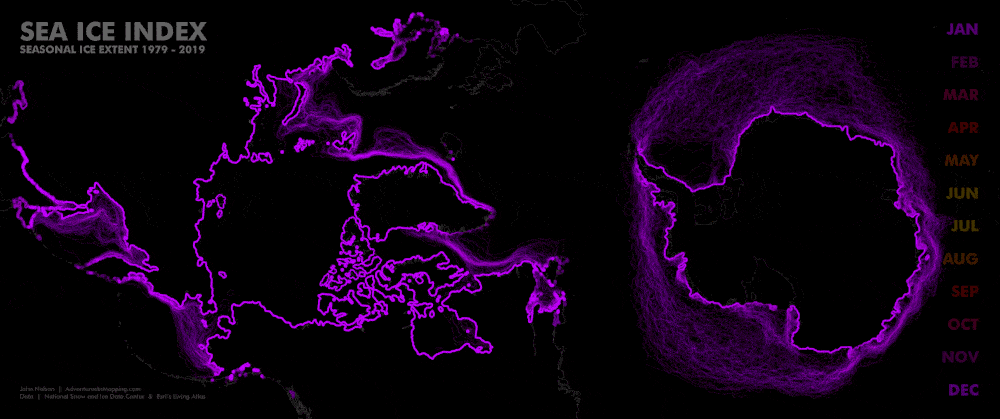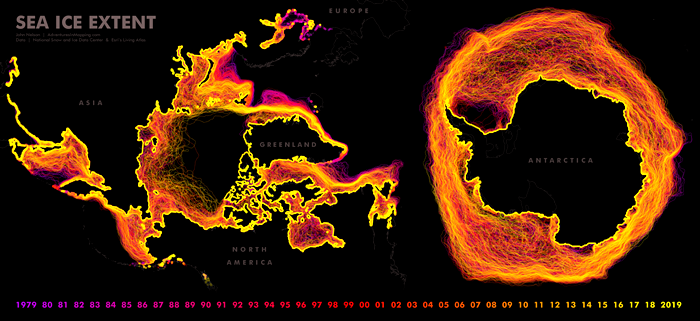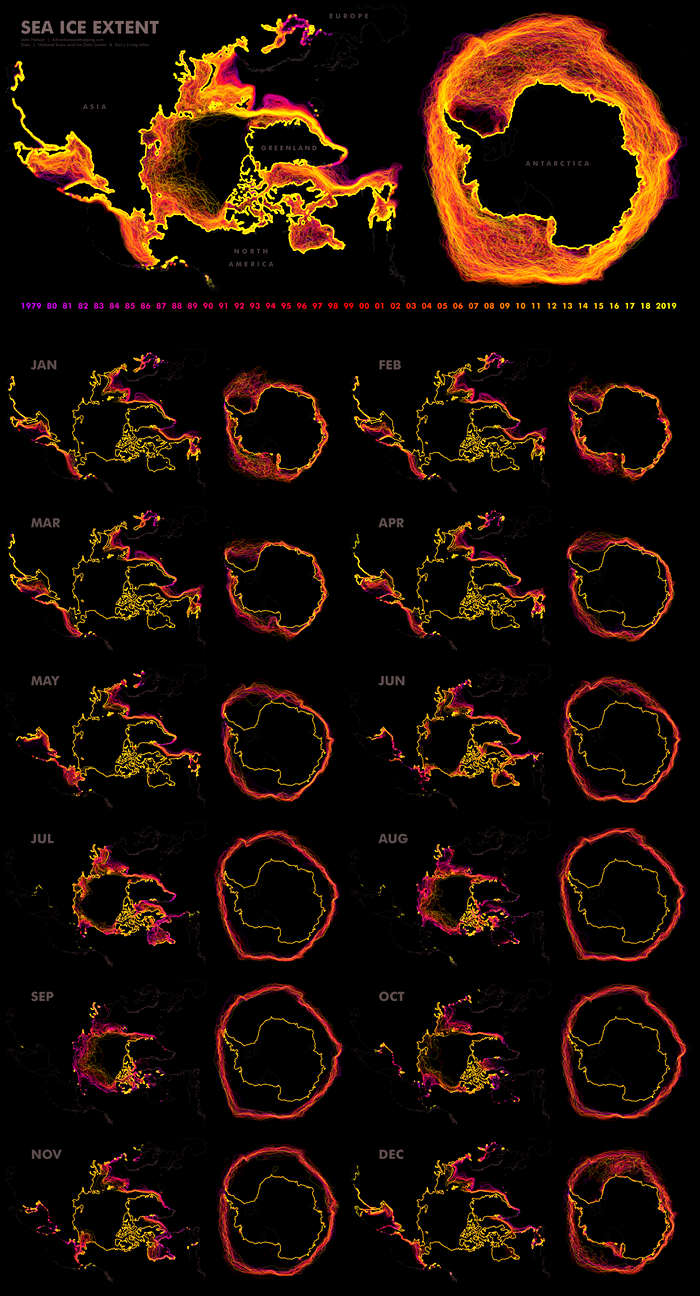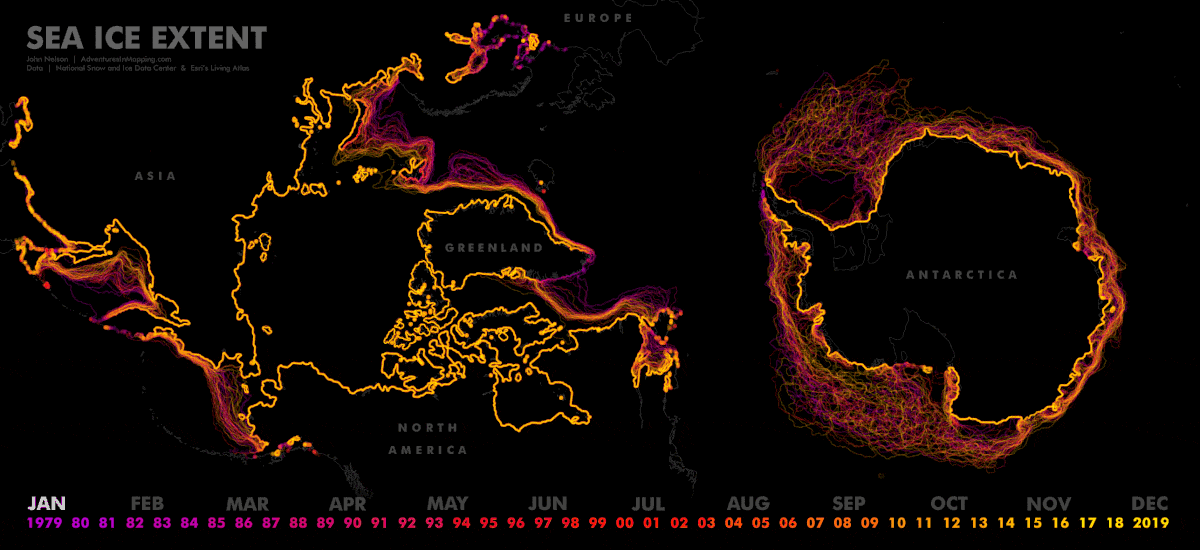The freezing and thawing of Arctic and Antarctic waters is a seasonal pulse of our planet. This is a monthly cross-section of 40 years (so we’re seeing 40 Januarys, 40 Februarys, and so on).

It’s interesting to see the oscillation between the opposite seasons of the North and South Poles. As the ice at one end of the earth expands, the other side recedes.
But we don’t see how the sea ice extents may have changed over the 40 year period, which has to be pretty interesting. So instead of coloring by month, let’s color by year.

Lots going on. Yellow lines (recent) in the Arctic appear to recede compared to historic extents (purples) which tended to extend further south. Antarctica actually shows a gradual growth in sea ice, except for the last couple years, when sea ice decreased even more than in the Arctic.
Here’s a version that breaks out individual month cross-sections through the years…

Here are those monthly cross-sections as a seasonal animation…

While the animation helps show the seasonal dynamism of sea ice, you might want to hit pause and take a close look, at these frames. Why not?












The data comes from the Living Atlas (Arctic and Antarctic sea ice extents, each month, since 1979), based on satellite-derived bounds provided of the National Snow and Ice Data Center. The maps were created in ArcGIS Pro.


Commenting is not enabled for this article.